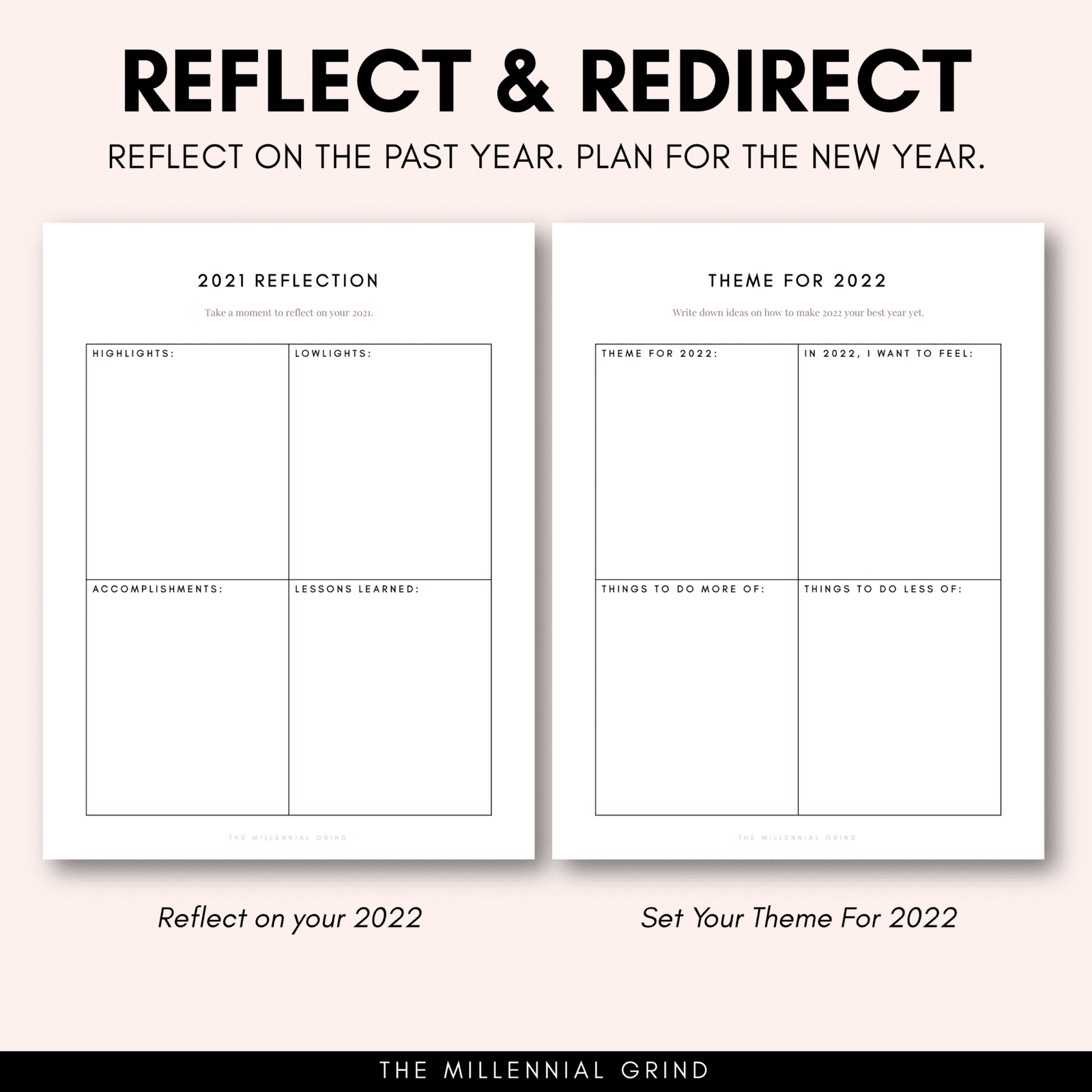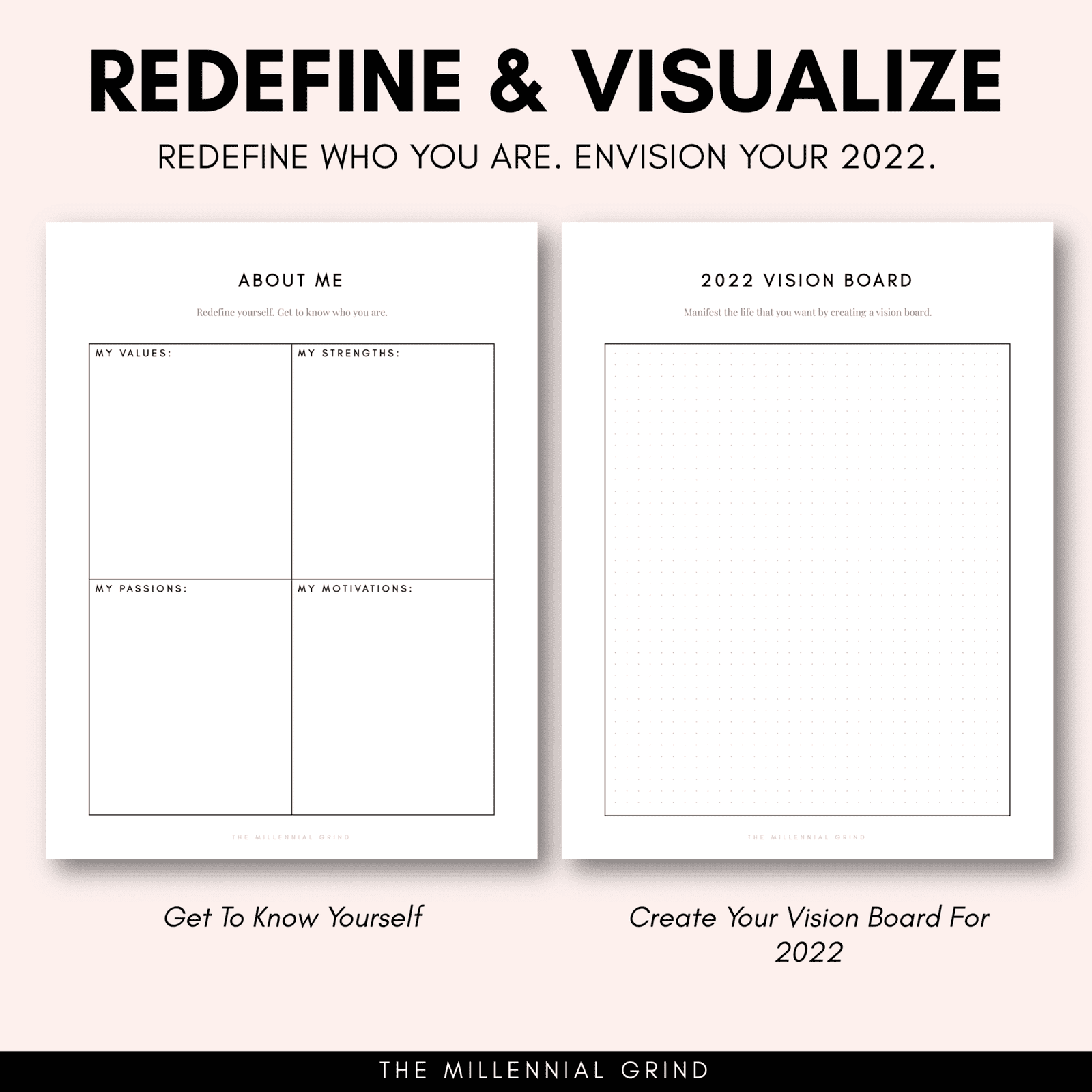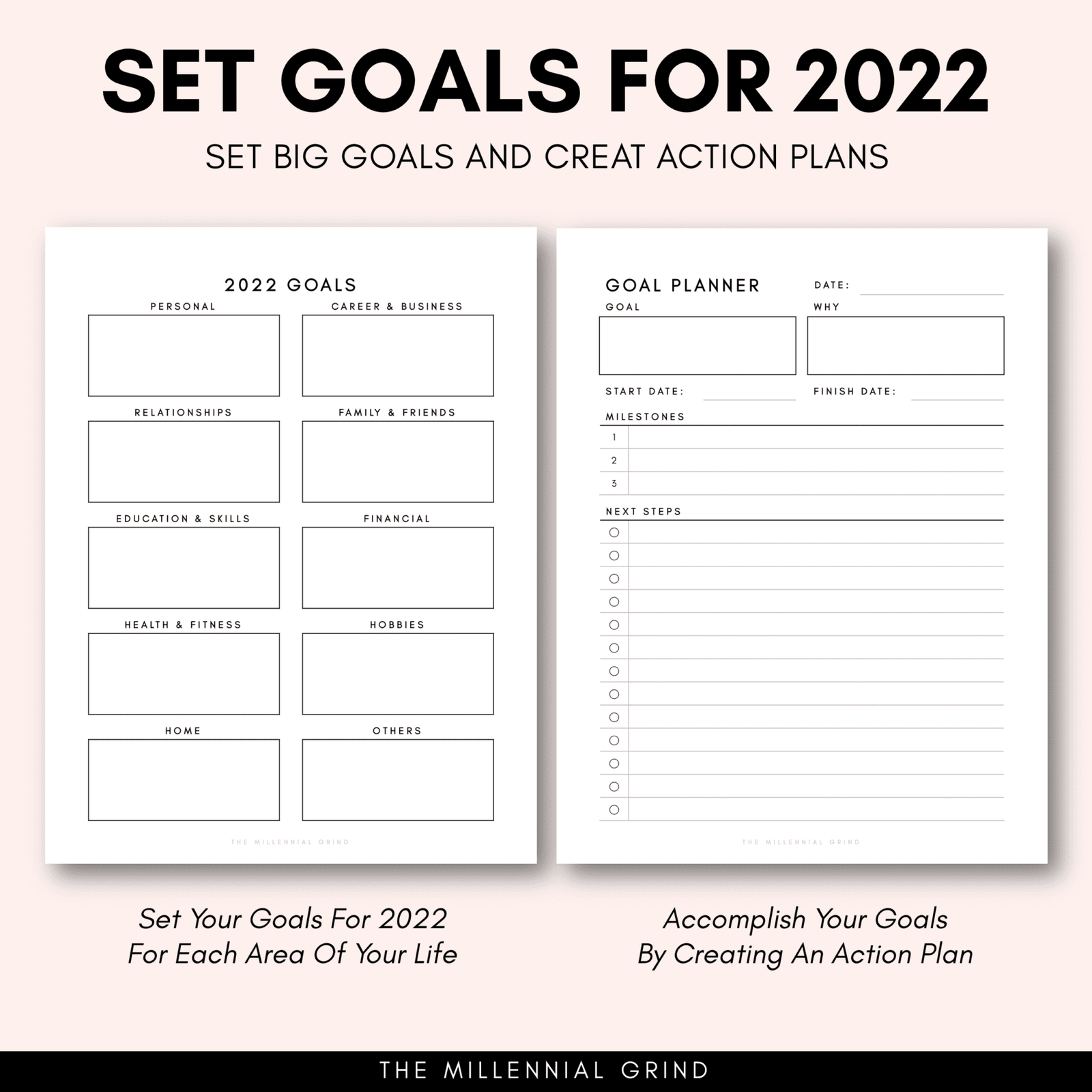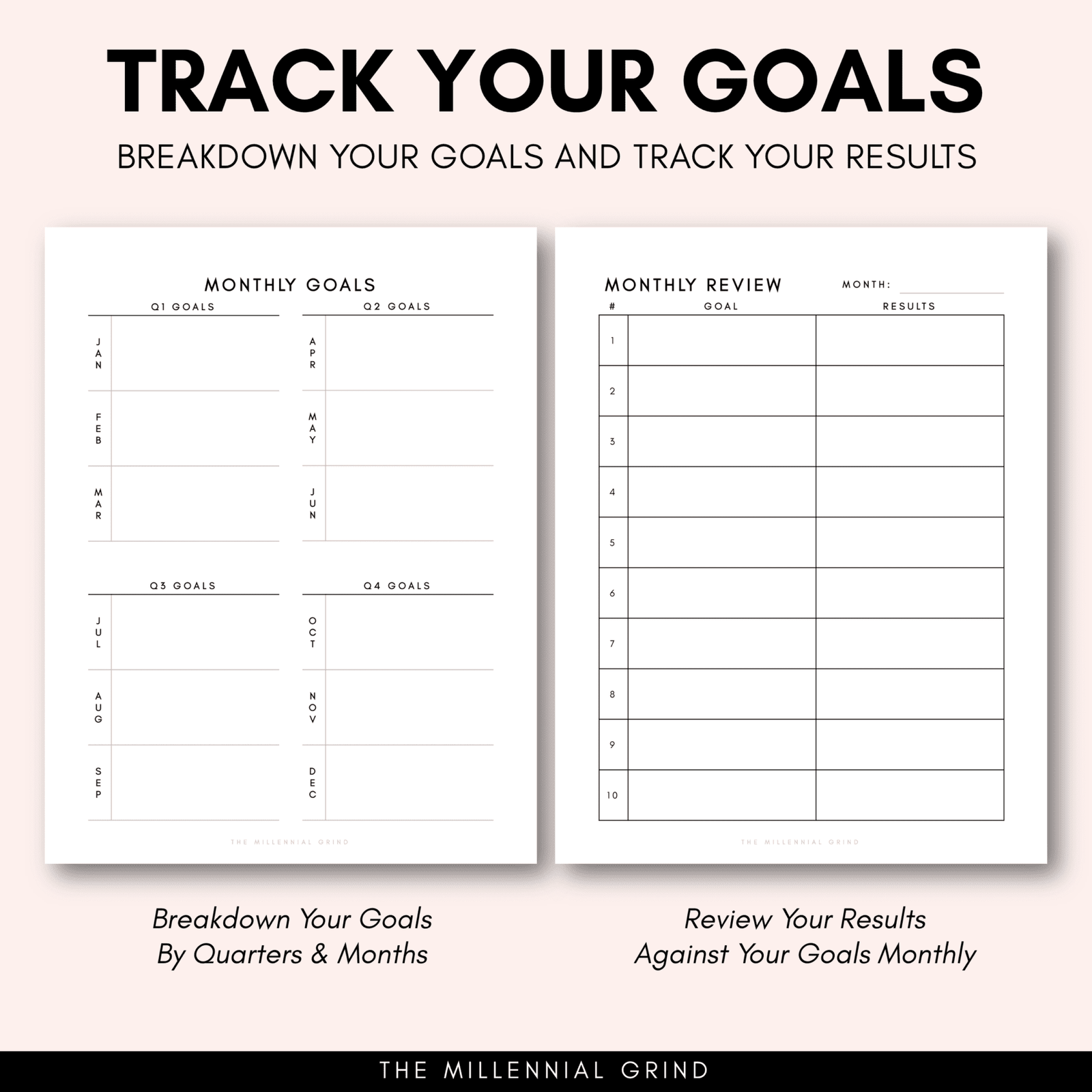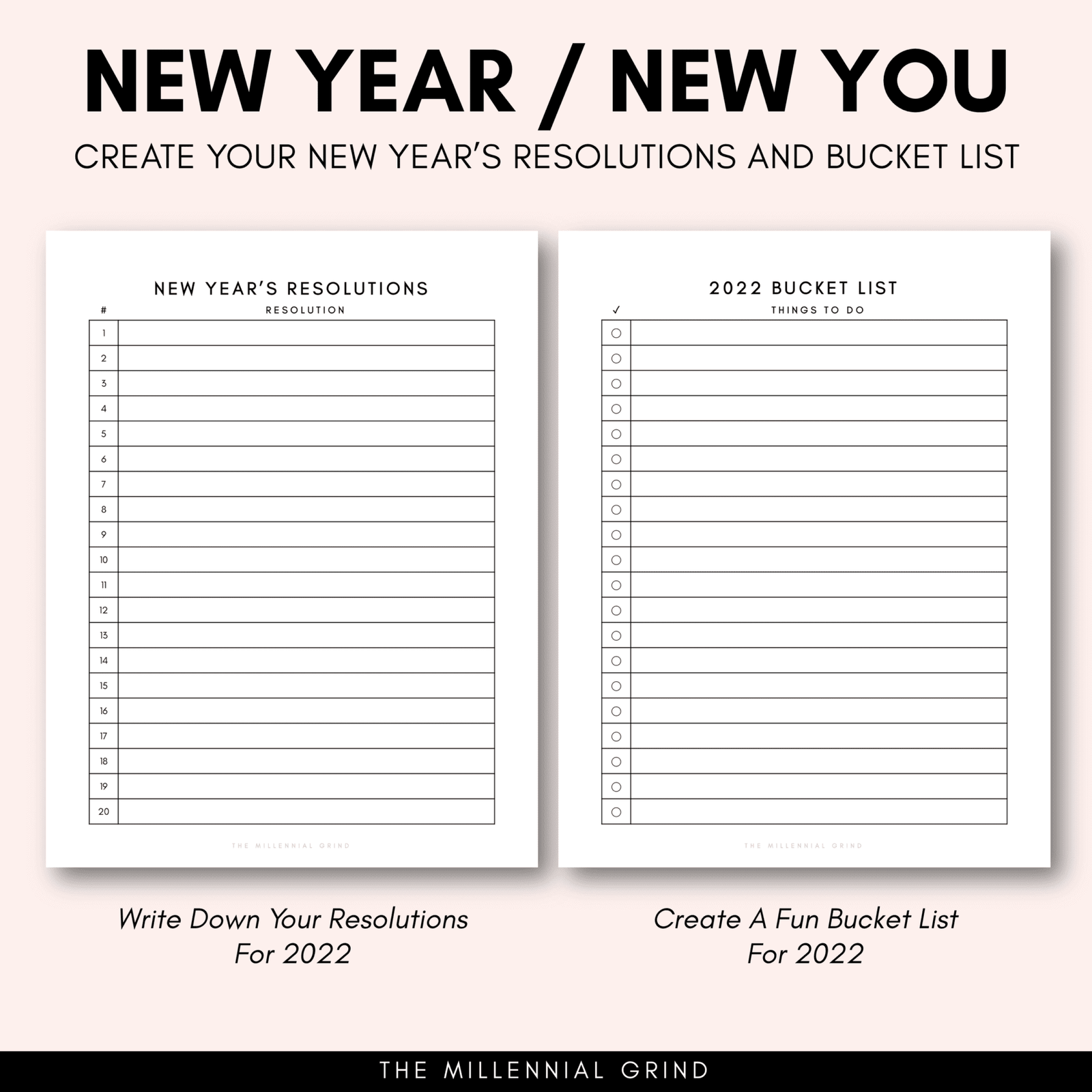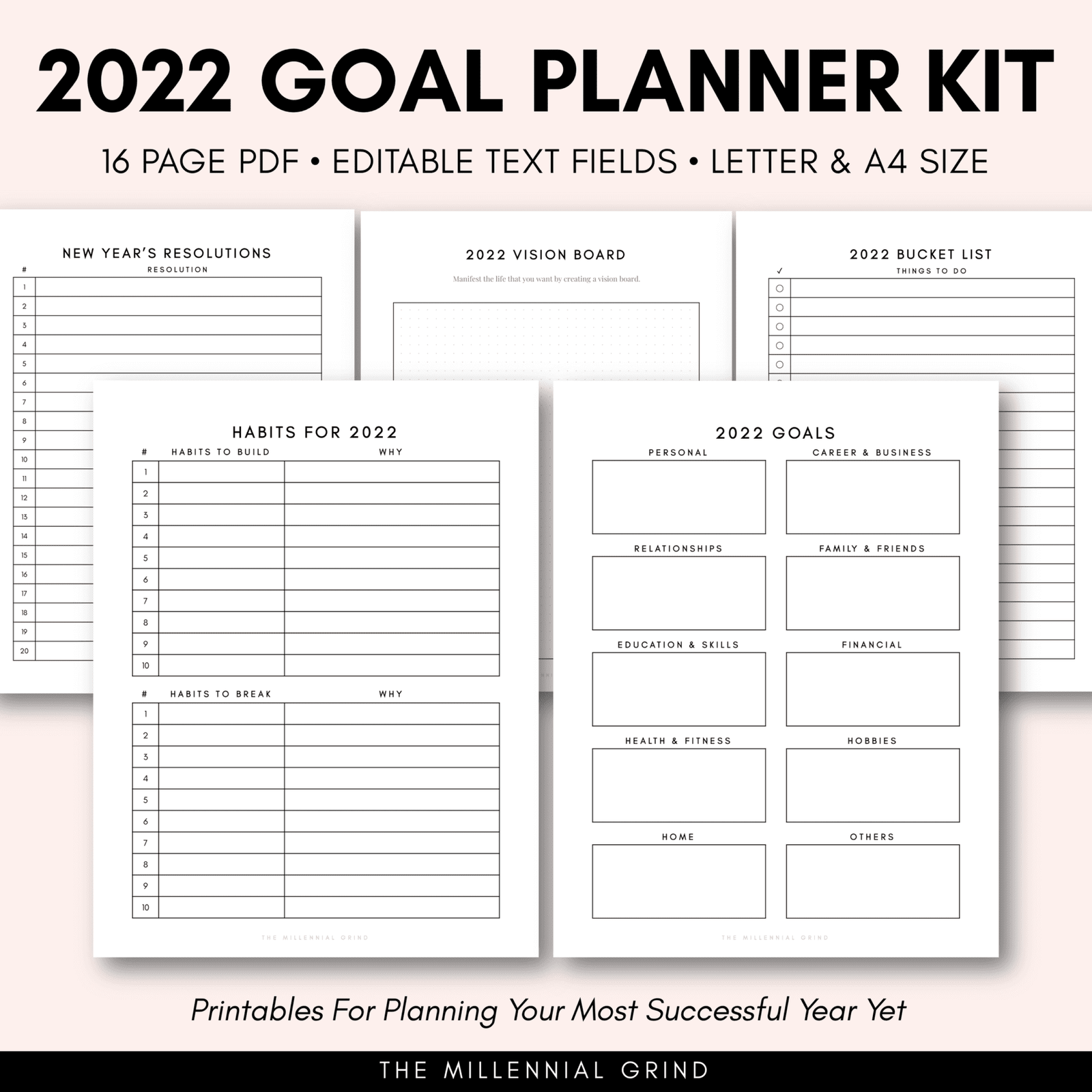It’s almost the end of 2021! For many of us, the end of the year is a busy time filled with parties and family gatherings, so now is the best time to reflect on the past 12 months and plan for the upcoming year.
I don’t know about you but I LOVE that fresh start feeling I get every new year. I just feel renewed and motivated to set goals for the new year.
If you’re interested in planning for next year, you can get started with these 12 steps to planning your most successful year yet.
12 Steps to Plan Your Best Year Yet
1. Reflect on The Past Year
To make a solid plan for a successful new year, you must know your starting point.
Take a moment to reflect on the past year to know where you currently are in your life.
Ask yourself the following:
- What were the highlights of last year?
- How did I grow as an individual?
- What were some of the lowlights of last year?
- What kind of lessons did I learn from last year?
Your answers to these questions will give you a good starting point on the areas of your life you should focus on and how you should transform your life in the new year.
2. Let Things Go
The second step is to let things go, both physically and emotionally.
Take time to declutter your room and get rid of anything that you do not use or do not spark joy.
Aside from getting rid of things that no longer serve you, you also need to let things go emotionally.
Let go of all the resentments, self-hate, and regrets over the last year that weigh you down.
Take whatever lessons you learned from it but let the pain and emotions go.
By doing this, you can start the new year refreshed with a positive mindset.
3. Define Who You Are

To know what kind of goals you want to set, you need to define who you are. Knowing who you are as a person helps you set goals that are right for you and lead to your definition of success.
Examine yourself by assessing these areas:
- Values
- Strengths & Weaknesses
- Passion
- Personality
Be honest and real when answering these prompts. Write down everything that comes to your mind – the good and the bad.
Remember, this is just your starting point. The objective of this exercise is to identify areas that you can work on and set goals that are relevant to you as a person.
Knowing yourself is a prerequisite to setting goals that resonate with your soul.
4. Create a Vision Board
Ikigai is a Japanese concept that means “a reason for being.”
This balance is found at the center where your passions and talents intersect with the things that the world needs and is willing to pay for.
The best way to find your Ikigai is to print out a diagram like the one below and then do a brainstorming session.
Step 1: List It Out
- What You Love To Do
- Things You’re Good At
- What The World Needs
- Jobs That You Can Get Paid For
Step 2: Identify What Intersects
- Passion
- Mission
- Profession
- Vocation
Step 3: Find Your Ikigai
Your Ikigai is the sweet spot where your passion, mission, profession, and vocation meet.
6. Let Fear Guide You

As humans, we are instilled with the “fight or flight” instinct. As a result, we instinctively run away from fear.
This instinct is amazing at protecting us from physical danger such as fires, but this instinct also kicks in when we encounter non-life-threatening fears.
This fear mechanism explains why most people get nervous before a big speech.
However, if we run away from our fears, we will never be able to grow.
So, to build up your self-confidence, you will have to make fear your north star and let it guide you.
An exercise you can do here is to list out things that are outside of your comfort zone.
If you find yourself struggling to list them out, start by listing things that are inside of your comfort zone and then flipping them to the opposite end of the spectrum.
Questions to Ask Yourself:
- What’s something outside of my comfort zone?
- Do you let fear hold you back from pursuing your dreams?
- How should I challenge myself this year?
7. Set Yearly Goals
Now that you have your theme and vision board. It’s time to gain clarity by listing out the big-ticket items you want to accomplish for the next year.
I like to group my goals into major categories to organize them methodically. Here are the groups I used to brainstorm my goals:
- Personal
- Career & Business
- Relationships
- Family & Friends
- Education & Skills
- Financial
- Health & Fitness
- Hobbies
- Home
- Others
Don’t worry about going into the nitty-gritty details here, the objective is to set big, over-arching goals, that will shape the direction you want to go in the next year. You’ll break them into smaller specific goals later.
8. Upgrade Your Habits
Habits are the small decisions you make and the actions you perform every day.
What you repeatedly do ultimately form the person you are, the things you believe, and the personality that you portray.
Make a list of habits you want to form and habits you want to give up.
Then, expand on that by writing down the reason and how forming or eliminating the habit will help you.
This will help reinforce the benefit of following through with your habit goals.
9. Start Using a Planner

Do you use a planner? If not, you really should start using one for the new year.
A planner is a fantastic tool to organize your tasks, events, and thoughts so you know exactly what to do every day to achieve those goals you set earlier.
Physical Planner: This is for those of you who prefer to have something tangible that you can write in.
Digital Planner: Digital planners are a great alternative to traditional planners because they offer the flexibility to write freely yet be accessible on the go.
10. Break Down Your Goals
Remember those big, annual goals you set earlier? They might look intimidating at first, so let’s break those down into specific, achievable goals.
Poorly defined goals can demotivate you because they are simply not realistic. Therefore, you should take the time to review your list of goals to ensure they meet the SMART requirements.
SMART stands for:
- Specific
- Measurable
- Achievable
- Relevant
- Time-bound
11. Review Your Goals
One of the most crucial steps that people neglect is to review their goals and track their progress.
You’ve spent so much time and effort on setting SMART goals so you must follow through with the execution.
Schedule monthly check-ins and quarterly reviews to assess your progress and check if you need to adjust any of the goals you set at the beginning of the year.
Don’t worry if you need to make changes to your goals, that is normal! It’s 100% times better to be done than to be perfect.
12. Make a Bucket List
One of the things I look forward to the most when planning for the next year is making my bucket list. Your bucket list is a list of items that you want to do in the next year simple for your pleasure and fun.
Why do you need a bucket list you ask? Well, it gives you a list of things to look forward to in the next year! While it’s good to set ambitious goals in your career and life, it’s important to remember to have fun and enjoy life at the same time.
Bucket List Ideas:
- Exotic Vacation
- Road Trip
- Hike
- Backpacking
- Sky Diving
- Scuba Diving
- Watch The Olympics
- Visit All Continents
- 5 Star Restaurants
- “Treat Yourself” Splurge
- Learn New Skills
- Pets
The 2022 Goal Planner Kit
The 2022 Goal Planner Kit is designed to help you create your best and most inspiring year yet.
This 16-page digital download comes with:
• Cover Page
• 2021 Reflection
• Theme For 2022
• About Me
• 2022 Vision Board
• Find Your Ikigai
• 2022 At A Glance
• 2022 Goals
• Monthly Goals
• Monthly Review
• Goal Planner
• New Year’s Resolutions
• Habits For 2022
• 2022 Bucket List
• 2022 Reading List
• 2022 Calendar
READ NEXT: 50 Best New Year’s Resolution Ideas for 2022
